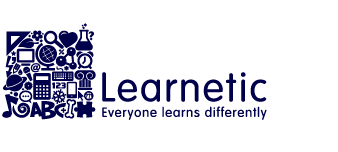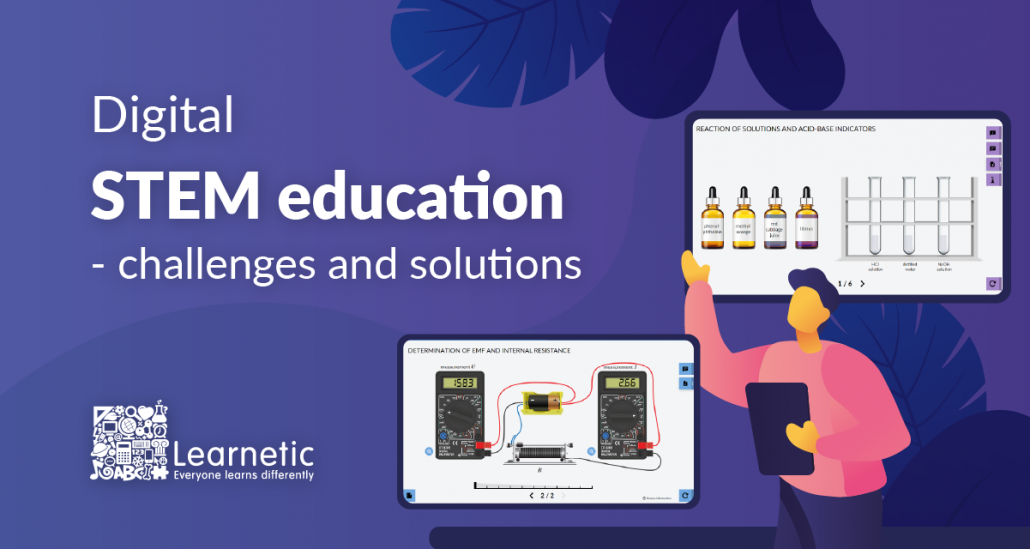Digital STEM education – challenges and solutions
Digital materials to support the work of teachers and students are cutting-edge solutions that schools around the world are eager to introduce. What do digital materials mean in practice? The crucial is interactivity, a much better understanding of the content by students, engaging and interesting tasks, more pleasant work for teachers, and the possibility of learning anywhere in the world. Digital solutions are beneficial for science teachers, such as biology, chemistry, physics or geography, who no longer need to conduct difficult research live. Still, they can instead show it through a ready-made video or animation. A printed textbook is not able to present a complex chemical experiment or allow solving interactive exercises. Digital resources also mean the ability to adapt to imposed conditions simply. The transition to remote mode no longer has to be an unpleasant surprise because eContent can be presented both in the classroom on an interactive whiteboard and with the help of Zoom, Microsoft Teams or professionally with customized Learning Management Platforms. There is a variety of digital content that can be easily adapted to specific needs without printing multiple versions of the textbook.
Educational challenges of recent years
The digital world, which is getting closer to us every day, means that the education industry also has to decide to change. However, a significant obstacle for schools is the complexity of accessing proven academic materials in digital form. Therefore, the role of the publishers is to be the ones to provide the package of digital content they need. In addition, children are increasingly overstimulated. They need engaging, interactive content that will capture and hold their attention. A simple textbook or a static PDF is no longer enough. Many more interesting solutions are needed.
Children associate many aspects of everyday life with the digital world. The challenge for publishers and teachers is to show students that the Internet, the digital world, is a space where they can also find learning materials to facilitate the acquisition of necessary content. Nowadays, the results are as important as the time we take to achieve them. Another challenge for the school is to teach children to work efficiently, which will produce the desired results in a relatively short period. Digital materials help achieve this goal.
Teaching STEM – difficulties and proposed solutions
The changes happening in front of our eyes sometimes condition the difficulties associated with teaching these subjects. What do these complications look like and, most importantly, how to address them?
- Remote learning has become problematic for educational publishers, teachers, students and parents. Sometimes lessons conducted away from the classroom are no longer as engaging for students as those undertaken at school. Teachers don’t have the opportunity to conduct experiments in front of students, and a simple lecture is no longer as understandable to them. Science subjects often require visualization of complex content. To solve this problem, we have prepared simulations of chemical and physical experiments, which publishers can include in their textbooks, and thus make the created content much more attractive. In addition, the students themselves can create experiments following teachers’ clues. Check out the example experiments:
Biology – Laboratory: Detection of peptide bonds
Chemistry – Laboratory: Reaction and pH of solutions
Physics – Laboratory: Diffraction grating
- Mathematical, physical or chemical operations are complicated in desktop and remote learning times. Explained by a teacher or read about in a textbook is often not enough to fully understand the material. To make textbooks created by publishers as user-friendly as possible for students and teachers, we have created interactive exercises rich in experiments and processes that explain the issue step by step. This form is much more accessible, interesting, engaging, and facilitates knowledge retention. Check what an example lesson looks like:
Upper Secondary Physics
Upper Secondary Math
Lower Secondary Chemistry
- A teacher who wants to conduct his science subject in the most engaging way possible for the student has to spend a great deal of time searching for appropriate digital materials, such as videos, illustrations, and interactive exercises. Therefore, a material that would provide these right away would achieve a considerable advantage in the market. In ready-made digital resources for STEM subjects, publishers can find a whole range of additional resources, such as videos, illustrations, posters, AR/VR elements and animations. Check ready-made products prepared for teachers you can distribute:
Interactive Whiteboard Resources for primary school covering mathematics, physics, chemistry, biology.
Interactive Charts Of Natural Science for K-12 covering 50 main topics from Geography, Physics, Biology and Chemistry. They have 1030 fascinating top-quality films, 3D graphics, diagrams, simulations, AR elements.
Virtual Science Laboratories – set of interactive eContent for teaching biology, chemistry, physics and geography classes at the secondary education level.
- The changing education program and the requirements of schools pose another difficult challenge for publishers. Ready-made interactive materials, thanks to their abundance of knowledge, can be easily adapted to the local Curriculum. In addition, all content can be translated into the native language (we support different types of alphabets). STEM subjects will always be present in schools, and their specificity means that digital materials to support teaching will be in constant demand.
Check mCurriculum – a complete digital curriculum of Maths & Science for K-12 education. It can be easily re-arranged, localized and adapted to fit specific curricula, textbooks and learning standards.
- Young generations of students are digitally oriented and the digital world is basically their natural environment. Unsurprisingly, they want their schools to go digital as well. They find the interactive way of imparting knowledge much more interesting and engaging. After all, science subjects can sometimes be challenging to understand, so digital materials are necessary to help teach them.
- Schools are increasingly keen on achieving high rankings, which ensures their growing popularity among talented students. And it is modern educational materials that lead to an attractive school offer that will become modern and attract capable and ambitious individuals, both students and teaching staff. It is a simple way to satisfy everyone and leads to a high position in the rankings. STEM subjects are crucial in educating future doctors and scientists ranging in all fields, so focusing on this particular group in specific is very important.
Why should you have digital STEM education materials?
Digital materials support the educational process at every stage and help everyone to be involved. They are important for entire schools and teachers, students and parents, who no longer have to worry about their children’s learning engagement. Publishers using digital solutions are valued by schools and are eager to cooperate with them. However, creating such materials from scratch requires much work, digital knowledge and time. Time is precious in fast-paced technological changes. That’s why we are reaching out to all publishers who decide they want to introduce digital solutions quickly and seamlessly. Our products for science subjects include a range of valuable science materials. Among others, you can find:
- VSL, or Virtual Science Laboratories. These are packages to help learn chemistry, biology, physics and geography. Each package contains 25 topics and as many as 75 interactive lessons, as well as printable worksheets. Each lesson is carefully developed in cooperation with teachers and university staff. The packages can be used for both classrooms, remote or hybrid work.
- Interactive Whiteboard Resources. These are digital kits for elementary schools that can also be used on a computer, tablet or smartphone. Almost 5000 interactive screens save time for teachers and are a sign of effective student learning. In addition, there is also Get onBoard, a set of 14 interactive boards designed to encourage students to express their opinions and support brainstorming.
- ICONS, or Interactive Charts of Natural Science. A project designed for K-12 education in biology, physics, chemistry, and geography. ICONS contains a set of digital materials that can be used both in the classroom and during remote teaching. They contain more than 1,000 interactive cards that can also be worked on using a mobile device.
All this digital material brings the publisher closer to modernization. The school helps educate new generations, and the students have a much more enjoyable experience during the knowledge retention process. They are helpful to anyone who works in the education sector.





